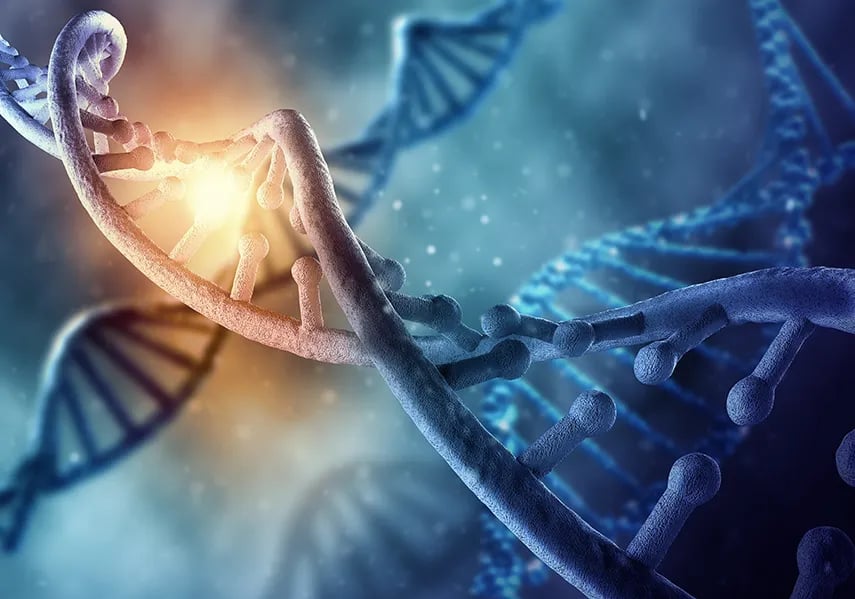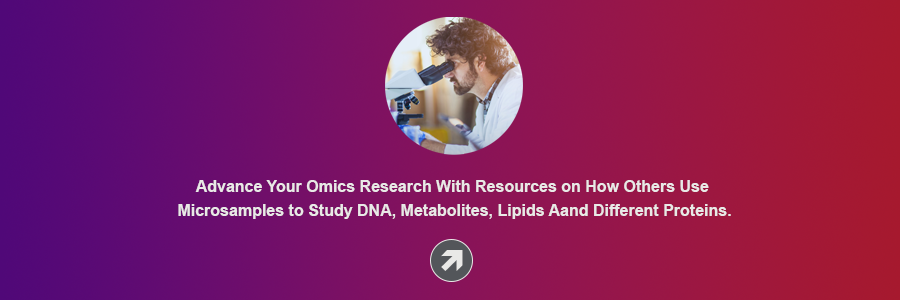Share this
discovering your genetics through the power of remote blood sampling
by Neoteryx Microsampling on Oct 12, 2020 9:00:00 AM
Dive into the DNA sequence, and you'll unravel tales of ancestry, insights into health predispositions, and even gauge how the body might react to specific medical interventions. The source of this treasure trove of genetic information? Just a few drops of blood. As we continue to understand our body's genetics, the methods of collecting blood samples are evolving. Let’s explore the age-old debate: blood vs. saliva for genomic sequencing.

Blood Sampling: Why It’s the Gold Standard for Genomic Studies
Collecting venipuncture blood samples from study participants has been key to whole-genome sequencing and studies that increase our understanding of biomarkers, but traditional blood collection procedures have not always been patient-friendly or convenient.
The traditional methods of collecting blood samples, involving invasive procedures and clinic visits, often deter potential study participants. The need for less invasive and more convenient methods has becomes glaringly evident, with many clinical trials and research studies transitioning to person-centric sampling.
Saliva DNA Extraction: A Less Invasive Option?
Saliva-derived genomic DNA presents itself as a user-friendly, cost-effective, and painless alternative. The ability to remotely collect saliva, combined with home collection kits from companies like DNA Genotek (Oragene), 23andMe, and Ancestry.com, makes it an attractive proposition.
But it's not all smooth sailing. While saliva is indeed a reliable source for DNA genotyping, it has its pitfalls. A study on cardiac patients revealed that saliva samples failed quality control requirements by a significant margin compared to blood samples, primarily due to high DNA fragmentation and protein contamination. Add to that the potential contamination from oral bacteria and food residues, and the accuracy of results can be compromised.
Blood DNA Extraction: The More Reliable Choice
A study to determine the quality of whole-genome sequencing from blood samples found that out of 531 blood samples that were collected, only 6% failed the quality control requirements, compared to a 46% failure of saliva samples. This indicates that blood samples are more reliable for both direct sequence analysis and high-resolution curve melting analysis of DNA.
The Future: Remote Blood Microsampling
Modern innovations, such as dried blood spot (DBS) sampling and volumetric absorptive microsampling, have made remote blood sample collection a reality. Tools like the Mitra® microsampling device based on VAMS® technology, have revolutionized blood sampling.
Despite their compact nature, dried blood samples even as small as 10 µL, can be used for a plethora of tests ranging from DNA testing and genetic fetal screenings to drug tests and infectious disease analysis.
How It Works: A Step-by-step Guide to Remote Blood Sampling for Your Studies
- Researchers can ship out a sampling kit like the Mitra® Blood Collection Kit.
- Study participants unpack the device and supplies upon arrival.
- They use the provided lancet to prick a fingertip.
- They collect a few blood drops using the device tip.
- Secure the device in its protective cartridge.
- Pack it into the specimen bag & pre-addressed envelope and mail it to the lab.
The magic happens in the lab where the dried blood sample, which dries in transit and remains stable for weeks at room temperature, gets processed.
Making the Choice: Remote Blood Sampling vs. Saliva Sampling
While saliva sampling offers convenience, dried blood samples present a superior method for genomic sequencing, especially when collected through advanced devices like the Mitra. Microsampling specialists at Trajan Scientific and Medical, creators of the Neoteryx® Mitra with VAMS technology, recommend a minimum of 30 µL for whole-genome sequencing. Plus, DNA in dried blood has been shown to have impressive longevity, remaining intact for several months post-collection.
In the quest to decipher our genetic code, while both methods hold their ground, dried blood sampling stands a step ahead of saliva sampling, especially with advancements in remote blood collection technology.
Image Credits: Trajan, iStock
Share this
- Microsampling (206)
- Research, Remote Research (119)
- Venipuncture Alternative (105)
- Clinical Trials, Clinical Research (83)
- Mitra® Device (73)
- Therapeutic Drug Monitoring, TDM (51)
- Dried Blood Spot, DBS (39)
- Biomonitoring, Health, Wellness (30)
- Infectious Disease, Vaccines, COVID-19 (24)
- Blood Microsampling, Serology (23)
- Omics, Multi-Omics (21)
- Decentralized Clinical Trial (DCT) (20)
- Specimen Collection (18)
- Toxicology, Doping, Drug/Alcohol Monitoring, PEth (17)
- Skin Microsampling, Microbiopsy (14)
- hemaPEN® Device (13)
- Preclinical Research, Animal Studies (12)
- Pharmaceuticals, Drug Development (9)
- Harpera Device (7)
- Industry News, Microsampling News (5)
- Antibodies, MAbs (3)
- Company Press Release, Product Press Release (3)
- Environmental Toxins, Exposures (1)
- July 2025 (1)
- May 2025 (1)
- April 2025 (2)
- December 2024 (2)
- November 2024 (1)
- October 2024 (3)
- September 2024 (1)
- June 2024 (1)
- May 2024 (1)
- April 2024 (4)
- March 2024 (1)
- February 2024 (2)
- January 2024 (4)
- December 2023 (3)
- November 2023 (3)
- October 2023 (3)
- September 2023 (3)
- July 2023 (3)
- June 2023 (2)
- April 2023 (2)
- March 2023 (2)
- February 2023 (2)
- January 2023 (3)
- December 2022 (2)
- November 2022 (3)
- October 2022 (4)
- September 2022 (3)
- August 2022 (5)
- July 2022 (2)
- June 2022 (2)
- May 2022 (4)
- April 2022 (3)
- March 2022 (3)
- February 2022 (4)
- January 2022 (5)
- December 2021 (3)
- November 2021 (5)
- October 2021 (3)
- September 2021 (3)
- August 2021 (4)
- July 2021 (4)
- June 2021 (4)
- May 2021 (4)
- April 2021 (3)
- March 2021 (5)
- February 2021 (4)
- January 2021 (4)
- December 2020 (3)
- November 2020 (5)
- October 2020 (4)
- September 2020 (3)
- August 2020 (3)
- July 2020 (6)
- June 2020 (4)
- May 2020 (4)
- April 2020 (3)
- March 2020 (6)
- February 2020 (3)
- January 2020 (4)
- December 2019 (5)
- November 2019 (4)
- October 2019 (2)
- September 2019 (4)
- August 2019 (4)
- July 2019 (3)
- June 2019 (7)
- May 2019 (6)
- April 2019 (5)
- March 2019 (6)
- February 2019 (5)
- January 2019 (8)
- December 2018 (3)
- November 2018 (4)
- October 2018 (7)
- September 2018 (6)
- August 2018 (5)
- July 2018 (8)
- June 2018 (6)
- May 2018 (5)
- April 2018 (6)
- March 2018 (4)
- February 2018 (6)
- January 2018 (4)
- December 2017 (2)
- November 2017 (3)
- October 2017 (2)
- September 2017 (4)
- August 2017 (2)
- July 2017 (4)
- June 2017 (5)
- May 2017 (6)
- April 2017 (6)
- March 2017 (5)
- February 2017 (4)
- January 2017 (1)
- July 2016 (3)
- May 2016 (1)
- April 2016 (2)



No Comments Yet
Let us know what you think